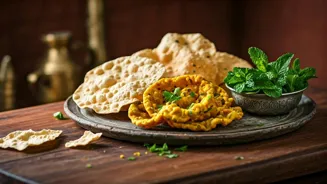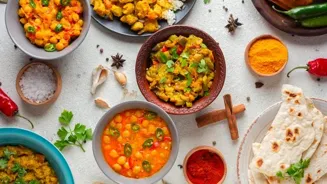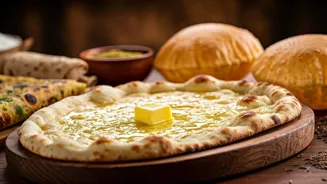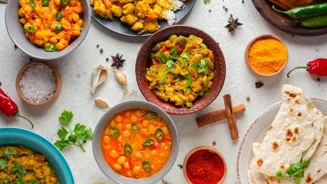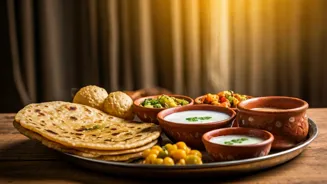Papad, a staple in Indian cuisine, often graces our plates. But is it as healthy as we think? Let's explore the nutritional side of this crispy delight.
Papad's Popularity
Papad's irresistible crunch has made it a beloved accompaniment to meals across India, from North to South. It’s a quick and easy snack, often enjoyed before or with the main course. Whether it's a simple meal at home or a festive occasion, papad is always in demand, making it a significant part of the Indian food culture.
Ingredients Revealed
The core ingredients of papad typically include lentil flour (urad dal), spices, and salt. Some variations might incorporate other flours or ingredients for flavor. The process usually involves mixing the ingredients into a dough, which is then rolled out and sun-dried or cooked. The nutritional value hinges on these elements.
Nutritional Breakdown
Papad’s nutritional profile varies depending on its composition and preparation. Generally, it offers a source of protein and fiber, mainly from the lentils. However, it can be high in sodium, particularly from the added salt. The method of cooking, like frying, affects the fat content, too.
Health Considerations
Given its potential high sodium content, excessive papad consumption may pose concerns for those with high blood pressure. Frying increases the fat, adding to its caloric load. Balancing papad intake with a variety of other nutrient-rich foods is key to maintaining a healthy diet.
Enjoy Responsibly
While papad holds a special place in Indian cuisine, moderation is key. Consider opting for baked or air-fried versions to reduce the fat content. Be mindful of portion sizes, and complement it with a diverse range of vegetables, dals, and grains for a balanced, healthy meal. Enjoy your papad wisely!


